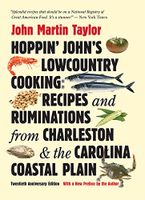Advertisement
Rice
Published 1992
The numbers are staggering. By the mid-nineteenth century more than seventy-five thousand acres of land were producing rice in the Lowcountry, yielding 160 million pounds. In 1860 the total national crop of rice was 5 million bushels, 3½ million of them grown here in South Carolina. Nathaniel Heyward, the most productive of the rice planters, owned twenty-three hundred slaves. His friend William Aiken had as many as one thousand on his Jehossee Island Plantation alone. Carolina Gold was considered the best rice in the world, demanded by European royalty and Chinese emperors. It was, as Macky Hill says, the caviar of the early nineteenth century. And he should know: He is a passionate historian and his family owns Middleburg Plantation, where the ruins of the first commercial rice mill still stand on an old rice dike on the banks of the Cooper River and where the lovely old house—the oldest wooden house in South Carolina—stands as the lonely prototype for the distinctive Charleston “single house.”

